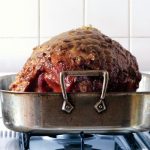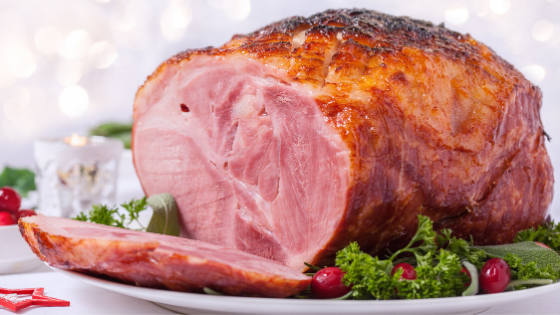 A bead of sweat runs down Farmer Andy Bauer’s face as he turns around as he backs the tractor up to the pig pen. Attached to the tractor is his father’s old John Deere grinder mixer machine holding a fresh load of pig feed made with soybean meal grown on the farm. He hears the 200 pound market hogs squealing in the background, anxious to eat their next meal. As he climbs into the pen to open the feeder, he scratches a black hog behind the ear. Although these pigs will go to market soon, he has a personal connection with each and every one of them. He checks on them multiple times a day to make sure they are healthy and have access to fresh food and clean water.
A bead of sweat runs down Farmer Andy Bauer’s face as he turns around as he backs the tractor up to the pig pen. Attached to the tractor is his father’s old John Deere grinder mixer machine holding a fresh load of pig feed made with soybean meal grown on the farm. He hears the 200 pound market hogs squealing in the background, anxious to eat their next meal. As he climbs into the pen to open the feeder, he scratches a black hog behind the ear. Although these pigs will go to market soon, he has a personal connection with each and every one of them. He checks on them multiple times a day to make sure they are healthy and have access to fresh food and clean water.
It is the middle of July. Over the next few months, the pigs Andy is feeding will be exhibited at fairs and shows around the state before being sold off to various buyers to fill their freezers for the winter. From the back leg, comes a popular cut served around the holidays, a ham. This tender cut of meat is rich with flavor and moisture from fat marbled into the meat.
Most of the pigs from Andy’s farm go to Wagner’s Meats in Mt. Airy to be processed. Once ready, there are a number of different options the consumer can choose on how they would like their ham. Many of these are the same options that will be presented to you when you go to the grocery store or a local market to purchase your holiday ham. These are:
- Fresh: As presented in its name, this is an uncured cut of meat. This allows for you to add your own dry rub or glaze before cooking. This cut always requires cooking before eating.
- Cured: This cut of meat can either be soaked in a brine (a saltwater mixture) or dry-rubbed and hung to dry. They can be sold ready-to-eat or may require cooking, so always check the label for cooking instructions.
- Smoked: Will be treated the same as the cured ham and then smoked.
- Boneless: This option provides easier carving come dinner time. When choosing a boneless ham, you should opt for 1/4 to 1/3 pound per person.
- Bone-in: While this requires more skillful carving, the flavor is worth the effort. And, as an added bonus, you can use the bone to make various soups and stews after you have finished the ham. When choosing bone-in, you should opt for 1/3 to 1/2 pound per person.
- Spiral cut: A spiral cut ham adds convenience when cooking, as it is pre-cut into thin slices that need to be pulled off the bone. However, this can sometimes make the ham lose moisture when cooking, be careful not to overcook as it can dry it out.
However you choose to prepare your ham, the most critical part of your holiday dinner is the cooking temperature. Always use a meat thermometer while cooking, and cook to the internal temperature of 145 degrees for whole cuts of pork and 160 for ground pork and sausages. Because of food safety concerns in the past, many believe that they still need to cook whole cuts of pork to the age-old 160 degrees. But with advancements in technology and animal care, you no longer have to worry about “cooking out” foodborne illnesses, such as trichinosis. The new approved temperature of 145 degrees allows for your ham to be more tender and flavorful — and is sure to be a hit with your family at your next holiday meal!
Hungry for more? Sign up for our newsletter and find us on Facebook, Twitter and Instagram.

